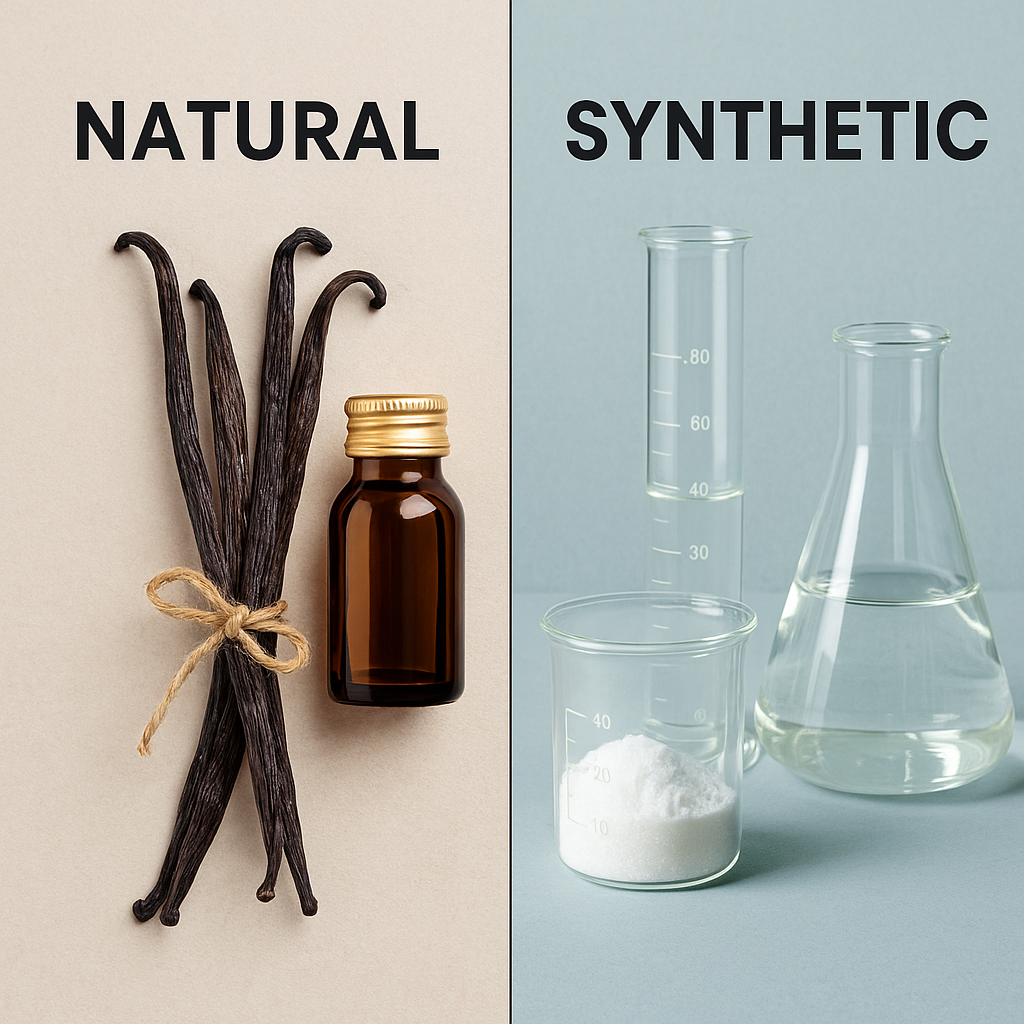🌿 Where Does Vanilla Flavoring Come From?
A Deep Dive Into Natural, Synthetic, and Everything In Between
🧭 Introduction: Why It Matters
Vanilla is one of the most loved and widely used flavors in the world—found in ice cream, cookies, beverages, perfumes, and even soaps. But when you read “vanilla flavoring” on a label, do you really know where it comes from?
With rising consumer concerns about natural ingredients and synthetic additives, it’s time to uncover the real origins of vanilla flavoring—and bust a few myths along the way.
🍃 1. Natural Vanilla Flavoring: Straight from the Vanilla Orchid
Natural vanilla flavoring is extracted from the vanilla bean, which grows on the Vanilla planifolia orchid. These plants are primarily cultivated in Madagascar, Mexicoو Indonesia.
💡 Key Facts:
- Each vanilla bean pod must be hand-pollinated and cured—a labor-intensive process.
- The active compound responsible for the familiar aroma is vanillin.
- Natural vanilla extract is produced by soaking the beans in alcohol and water.
🧪 This process yields rich, complex notes—but also makes it one of the most expensive spices in the world.
🧬 2. Synthetic Vanilla: The Science Behind the Scent
Because of the high cost and limited availability of natural vanilla, most of the vanilla flavor used globally is اصطناعية. Surprisingly, it’s chemically identical to natural vanillin.
🧪 Common Synthetic Sources:
- Lignin – derived from wood pulp (a byproduct of paper manufacturing)
- Guaiacol – derived from petrochemicals
- Ferulic acid – sourced from rice bran or corn and fermented via biotechnology
✅ Advantages of Synthetic Vanillin:
- Consistent supply
- Affordable pricing
- High purity and stability
Around 95% of vanilla-flavored products on the market use synthetic vanillin.
🚫 3. Myth Busted: The Beaver Gland Controversy
A persistent myth suggests that vanilla flavoring is made from beaver anal glands, specifically a substance called castoreum. While technically true in rare perfumery cases, it is not used in modern food production.
Why?
- It’s extremely expensive to harvest
- It’s not approved for wide-scale food use
- It’s largely obsolete thanks to synthetic alternatives
So, no—your vanilla ice cream doesn’t come from a beaver.
⚖️ 4. Vanilla Extract vs. Vanilla Flavoring vs. Vanillin
Not all vanilla terms mean the same thing. Here’s a breakdown:
| Term | Source | Natural? | Common Use |
|---|---|---|---|
| Vanilla Extract | Alcohol extraction of real vanilla beans | ✅ Yes | Premium desserts, gourmet baking |
| Vanilla Flavoring | Often synthetic or mixed | ❌ No / Mixed | Processed foods |
| Vanillin | Pure compound from synthetic or bio-fermentation | ❌ / ✅ (depending on source) | Ice cream, candy, bakery |
👉 Always read the label to know what you’re getting.
🌍 5. Why Synthetic Vanilla Isn’t Always Bad
There’s a growing trend toward natural ingredients, but synthetic vanilla has its own merits:
- ✅ Sustainability: Reduces over-harvesting of natural vanilla
- ✅ Cost-effective: Ideal for large-scale food production
- ✅ Climate resilience: Not affected by poor harvests or natural disasters
In fact, some biotech-derived vanillin is now labeled as natural identical, especially in the EU.
🛒 6. How to Choose the Right Vanilla Product
Whether you’re a consumer or a manufacturer, your ideal vanilla flavoring depends on your needs:
For Consumers:
- Choose vanilla extract for baking or premium recipes
- Use vanillin flavoring for everyday applications (e.g., cereal, snacks)
For Manufacturers:
- Consider synthetic or bio-based vanillin for scalability and pricing
- Comply with local labeling laws (e.g., FDA vs EFSA standards)
✅ Conclusion: Know Your Vanilla
Vanilla flavoring can come from nature—or a lab—but what matters is transparency, qualityو intent. Understanding the differences helps you make informed choices, whether you’re buying a bottle of vanilla essence or producing a vanilla-flavored drink for millions.
